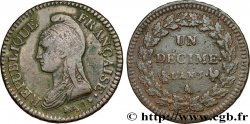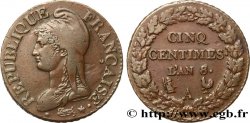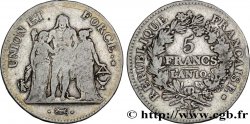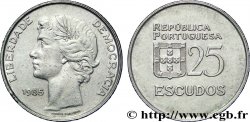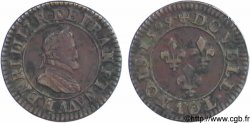fme_597706 - CONSULATE Médaille, Élection de la Colonne Nationale, place Vendôme
120.00 €(Approx. 129.60$ | 99.60£)
Quantity
Add to your cart

Type : Médaille, Élection de la Colonne Nationale, place Vendôme
Date: 1800
Mint name / Town : 75 - Paris
Metal : copper
Diameter : 41 mm
Orientation dies : 12 h.
Engraver DUVIVIER Benjamin (1730-1819)
Weight : 34,59 g.
Edge : lisse
Coments on the condition:
Patine hétérogène. La médaille présente des coups et rayures, ainsi qu’une usure sur le buste du consul. Présence de quelques taches noires
Obverse
Obverse legend : BONAPARTE PREMIER CONSUL / CAMBACÉRÈS SECOND CONSUL / LEBRUN TROISME CONSUL / DE LA RÉPUBLIQUE / FRANÇAISE.
Obverse description : Buste de Bonaparte à droite ; au-dessous, légende en quatre lignes.
Reverse
Reverse legend : LE PEUPLE FRANÇAIS À SES DÉFENSEURS // PREMIERE PIERRE DE LA COLONNE NATION-LE / POSÉE PAR / LUCIEN BONAPARTE / MINISTRE DE L'INTÉRIEUR / 25 MESSIDOR AN 8/ 14 JUILLET 1800.
Reverse description : Légende circulaire et en sept lignes horizontales.
Commentary
Médaille signée DU VIVIER sous la base du cou au droit. Il est intéressant de noter une variante dans la légende de revers COLONNE NATION-LE comparé à la médaille en argent n° 1543 de MONNAIE IX.
Cette médaille commémore le onzième anniversaire de la prise de la Bastille, le 14 juillet 1789. La construction d'une colonne dédiée à la Nation fut décidée le 20 mars 1800 (29 ventôse an VIII), Bonaparte Premier Consul fit "décréter l'érection, sur la place de la Concorde, d'une Colonne Nationale sur laquelle on inscrirait les noms de ceux qui auraient rendu des services importants à la Patrie", coll. Essling n° 848. Cette colonne ne fut jamais élevée. En revanche, Lucien, frère de Napoléon Bonaparte, posa sur la place Vendôme le 14 juillet 1800 la première pierre de la Colonne qui sera ensuite élevée à la gloire de Napoléon Ier. Il faudra encore attendre plus de trente ans pour voir une colonne sur la place de la Bastille qui ne commémore pas la prise de la Bastille, mais les journées de juillet 1830, qui virent la chute de Charles X et son remplacement par Louis-Philippe, connues sous le nom des "Trois Glorieuses". Au droit de notre médaille, Bonaparte est figuré seul, en habit de premier Consul tandis que Cambacérès et Lebrun sont rejetés à l'exergue et dans la légende. Au revers, pour l'une des premières fois, le calendrier républicain côtoie le calendrier grégorien qui fait sa réapparition. Il faudra néanmoins attendre le 1er janvier 1806 pour qu'il remplace définitivement le calendrier révolutionnaire.
Cette médaille existe en or (LEU 14/34), rarissime, en argent, très rare et en bronze, rare.
Cette médaille commémore le onzième anniversaire de la prise de la Bastille, le 14 juillet 1789. La construction d'une colonne dédiée à la Nation fut décidée le 20 mars 1800 (29 ventôse an VIII), Bonaparte Premier Consul fit "décréter l'érection, sur la place de la Concorde, d'une Colonne Nationale sur laquelle on inscrirait les noms de ceux qui auraient rendu des services importants à la Patrie", coll. Essling n° 848. Cette colonne ne fut jamais élevée. En revanche, Lucien, frère de Napoléon Bonaparte, posa sur la place Vendôme le 14 juillet 1800 la première pierre de la Colonne qui sera ensuite élevée à la gloire de Napoléon Ier. Il faudra encore attendre plus de trente ans pour voir une colonne sur la place de la Bastille qui ne commémore pas la prise de la Bastille, mais les journées de juillet 1830, qui virent la chute de Charles X et son remplacement par Louis-Philippe, connues sous le nom des "Trois Glorieuses". Au droit de notre médaille, Bonaparte est figuré seul, en habit de premier Consul tandis que Cambacérès et Lebrun sont rejetés à l'exergue et dans la légende. Au revers, pour l'une des premières fois, le calendrier républicain côtoie le calendrier grégorien qui fait sa réapparition. Il faudra néanmoins attendre le 1er janvier 1806 pour qu'il remplace définitivement le calendrier révolutionnaire.
Cette médaille existe en or (LEU 14/34), rarissime, en argent, très rare et en bronze, rare.







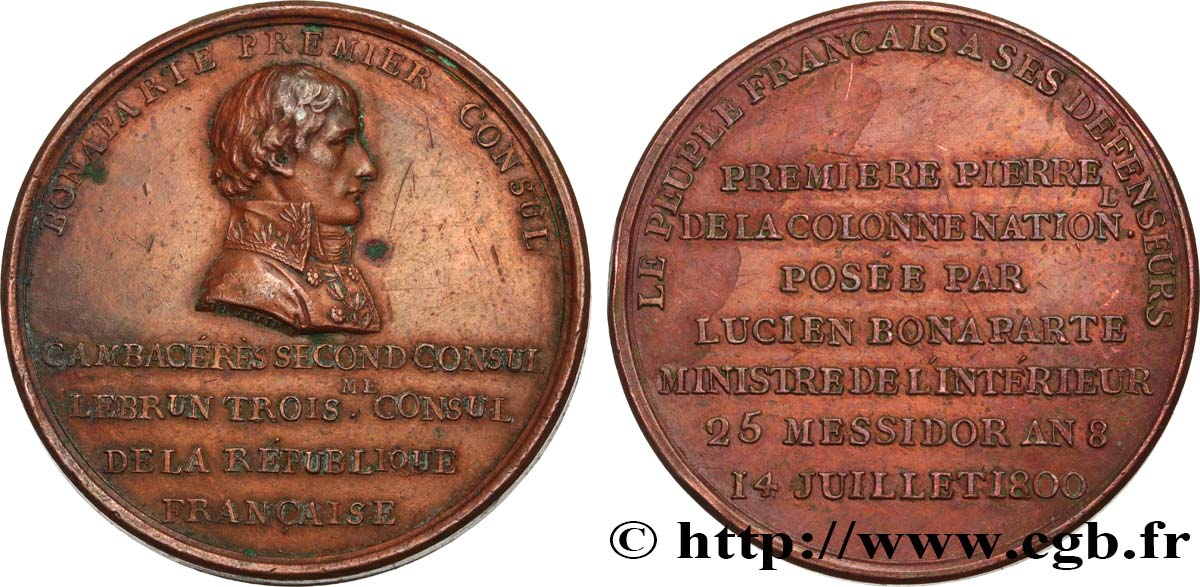
 Report a mistake
Report a mistake Print the page
Print the page Share my selection
Share my selection Ask a question
Ask a question Consign / sell
Consign / sell
 Full data
Full data
